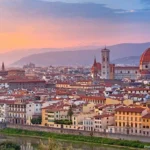
Welcome to our exploration of the Palmetto State, where rich history, stunning landscapes, and vibrant culture come together to create a unique Southern experience. South Carolina, known for its charming towns, beautiful coastline, and significant contributions to American history, is a state full of surprises. Whether you’re a lifelong resident or planning your first visit, there’s always something new to discover. From its status as a top peach producer to its pivotal role in the Civil Rights Movement, South Carolina offers a wealth of intriguing facts that highlight its diverse heritage and natural beauty. Join us as we delve into 25 fascinating facts about South Carolina that showcase what makes this state truly special!
Date of Statehood: South Carolina was the first state to secede from the Union on December 20, 1860, a pivotal moment in American history that contributed to the outbreak of the Civil War. The decision to secede was fueled by tensions over states’ rights and slavery, reflecting the deep divisions in the nation at the time. Following its secession, South Carolina became a founding member of the Confederate States of America. The state played a crucial role in the Civil War, with several significant battles and events occurring within its borders, including the bombardment of Fort Sumter, which marked the war’s beginning.
Capital City: Columbia, established as the state capital in 1786, was chosen for its central location, making it accessible to citizens from different parts of South Carolina. The city was named after Christopher Columbus and has since developed into a vibrant hub of education, culture, and politics. Home to the University of South Carolina, Columbia boasts a rich array of museums, theaters, and historic sites, including the South Carolina State House, which features a stunning dome and is a notable example of neoclassical architecture.
Population: According to the 2020 U.S. Census, South Carolina had a population of approximately 5.1 million people, reflecting significant growth over the past few decades. The state’s population is diverse, with a mix of urban and rural communities. Major cities like Charleston, Greenville, and Columbia contribute to the state’s demographic landscape, while rural areas maintain traditional Southern culture. The population growth has been driven by factors such as job opportunities, a favorable climate, and the state’s appealing lifestyle.
Area: Covering an area of about 32,020 square miles, South Carolina is the 40th largest state in the United States. The state features a diverse geography that includes coastal plains, rolling hills, and the Blue Ridge Mountains in the northwest. This variety of landscapes offers numerous recreational opportunities, from beach activities along the Atlantic coast to hiking and camping in the mountainous regions. The state’s geography also plays a role in its agriculture, with fertile lands supporting crops such as cotton, soybeans, and peaches.
Myrtle Beach: Myrtle Beach is renowned as one of the most popular tourist destinations in South Carolina, attracting over 14 million visitors annually. Known for its beautiful sandy beaches, vibrant nightlife, and numerous golf courses, Myrtle Beach offers a wide range of recreational activities. The area is famous for its boardwalk, amusement parks, and family-friendly attractions, making it a favorite among families and vacationers. The Grand Strand, a 60-mile stretch of coastline, is home to Myrtle Beach and features a variety of accommodations, dining options, and entertainment venues.
Charleston: Founded in 1670, Charleston is the oldest city in South Carolina and is celebrated for its rich history and well-preserved architecture. The city played a significant role during the colonial period and the American Revolution. Today, Charleston is known for its historic districts, cobblestone streets, and antebellum mansions, which attract history enthusiasts and tourists alike. The city is also recognized for its culinary scene, showcasing Lowcountry cuisine and Southern hospitality. Notable landmarks include the Battery, Rainbow Row, and the historic Charleston City Market.
Oldest City: As the oldest city in South Carolina, Charleston boasts a history that spans over 350 years. Originally established as Charles Town, the city served as a major port and cultural center in the 18th century. Charleston has been shaped by various historical events, including its role as a key player in the transatlantic slave trade and its strategic significance during the Civil War. The city’s rich heritage is preserved through its historic buildings, museums, and cultural festivals, making it a living testament to the state’s past.
State Flower: The Yellow Jessamine (Gelsemium sempervirens) was designated as the state flower in 1924. This native vine is known for its bright yellow, fragrant flowers that bloom in the spring. The Yellow Jessamine is often found in gardens and natural areas throughout South Carolina and symbolizes the state’s beauty and resilience. Its ability to thrive in various environments makes it a fitting representation of South Carolina’s diverse landscapes.
State Bird: The Carolina Wren (Thryothorus ludovicianus) was officially recognized as the state bird in 1948. This small, brown bird is known for its distinctive, cheerful song and is commonly found in gardens, forests, and urban areas across South Carolina. The Carolina Wren is a year-round resident, and its adaptability to various habitats makes it a familiar sight for residents and birdwatchers alike. The bird’s lively presence and melodious call contribute to the state’s natural charm.
State Tree: The Sabal Palmetto, also known as the Cabbage Palm (Sabal palmetto), was designated as the state tree of South Carolina in 1939. This palm tree is native to the southeastern United States and can be found throughout South Carolina, particularly along the coastal regions. The Sabal Palmetto is characterized by its tall, slender trunk and fan-shaped leaves, which can grow up to 5 feet wide. The tree is not only an iconic symbol of the state but also plays an important role in the local ecosystem, providing habitat for various wildlife species. Additionally, the Sabal Palmetto has historical significance, as it was used in the construction of the state’s early forts and is featured on the state flag. Its resilience and ability to thrive in coastal conditions reflect the spirit of South Carolina’s natural environment.
Largest City: Columbia is the largest city in South Carolina by population, serving as the state capital and a central hub for government, education, and culture. As of the 2020 Census, Columbia had a population of approximately 133,451 residents. The city is home to the University of South Carolina, which significantly contributes to its vibrant atmosphere and economy. Columbia features various attractions, including the South Carolina State Museum, Riverbanks Zoo and Garden, and numerous parks, making it a lively urban center with a blend of history and modern amenities.
Fort Sumter: Fort Sumter, located in Charleston Harbor, is historically significant as the site where the first shots of the Civil War were fired on April 12, 1861. The fort was a Union stronghold, and its bombardment by Confederate forces marked the beginning of a conflict that would last four years and reshape the nation. Today, Fort Sumter is a National Monument, attracting visitors who can explore its historic grounds and learn about its role in American history through guided tours and exhibits.
Elevation: Sassafras Mountain, the highest point in South Carolina, stands at 3,560 feet (1,083 meters) above sea level. Located in the Blue Ridge Mountains, Sassafras Mountain offers stunning views and is a popular destination for hikers and outdoor enthusiasts. The area surrounding the mountain is rich in biodiversity, featuring various plant and animal species. Sassafras Mountain is also significant for its geological features and the role it plays in the state’s natural landscape.
Longest River: The Santee River is the longest river in South Carolina, stretching approximately 143 miles. It flows from the confluence of the Congaree and Wateree Rivers and empties into Lake Marion, eventually reaching the Atlantic Ocean. The Santee River is vital for the region’s ecology and economy, providing habitats for wildlife and serving as a resource for fishing, boating, and other recreational activities. The river’s watershed supports agriculture and is an essential part of the state’s water management system.
Historical Sites: South Carolina is home to 13 National Park Service sites, including Congaree National Park, which protects one of the largest intact expanses of old-growth bottomland hardwood forest in the United States. Established as a national park in 2003, Congaree features diverse ecosystems, including floodplain forests and wetlands, along with a rich array of wildlife. Visitors can enjoy hiking, canoeing, and camping, making it a significant destination for nature lovers and outdoor enthusiasts.
Gullah Culture: The Gullah culture, which includes a unique Creole language and rich traditions, is prevalent in the coastal regions of South Carolina, particularly among the descendants of enslaved Africans. The Gullah people have preserved their African heritage through storytelling, music, crafts, and cuisine, contributing to the cultural diversity of the state. The Gullah language, characterized by its distinct dialect, reflects the blending of African and English influences. Efforts to promote and preserve Gullah culture continue, highlighting its importance in South Carolina’s history.
State Dance: The Shag, a form of swing dance, was designated as the state dance of South Carolina in 1984. Originating in the 1940s along the Grand Strand, the Shag is characterized by its smooth, relaxed style and is often performed to beach music. The dance has deep roots in the coastal culture of South Carolina and remains popular at social gatherings and dance events. The Shag is celebrated for its connection to the state’s musical heritage and its role in fostering community and social interaction.
State Motto: The state motto of South Carolina, “Dum spiro spero,” translates to “While I breathe, I hope.” Adopted in 1776, this motto reflects the resilience and optimism of the state’s people throughout its history. It embodies a spirit of perseverance, emphasizing hope and determination even in challenging times. The motto is often associated with South Carolina’s commitment to progress and the pursuit of a better future for its residents.
Education: The University of South Carolina, founded in 1801, is the flagship university of the state and has one of the largest student bodies in the Southeast, with over 35,000 students enrolled. The university offers a wide range of undergraduate and graduate programs and is known for its research initiatives and community engagement. The campus features historic buildings, modern facilities, and a vibrant student life, contributing to Columbia’s status as an educational and cultural center in the state.
Agriculture: South Carolina is renowned for its agricultural output, particularly its peaches, ranking among the top producers in the United States. The state’s warm climate and fertile soil create ideal conditions for peach cultivation, leading to a thriving industry that contributes significantly to the local economy. The peach season typically runs from late May through August, during which various festivals and events celebrate this beloved fruit. The state’s peaches are known for their sweetness and are enjoyed fresh, canned, or used in a variety of culinary dishes, reinforcing South Carolina’s agricultural identity as the “Palmetto State.”
Historic Plantations: South Carolina boasts a rich history reflected in its numerous historic plantations, with Boone Hall Plantation being one of the most notable. Established in 1681, Boone Hall is recognized as one of the oldest working plantations in the United States. Visitors can explore its antebellum architecture, beautiful gardens, and learn about the plantation’s history, including its role in the cotton industry and the lives of enslaved individuals who worked there. The plantation serves as a living museum, offering tours that highlight the cultural heritage and historical significance of the region.
Length of Coastline: The coastline of South Carolina stretches approximately 187 miles along the Atlantic Ocean, featuring a diverse array of landscapes, including sandy beaches, marshes, and barrier islands. This extensive coastline is a major draw for tourism, offering recreational activities such as fishing, boating, and beachcombing. Popular destinations like Myrtle Beach and Hilton Head Island attract millions of visitors each year, contributing to the state’s tourism industry. The coastal ecosystem is also home to a variety of wildlife, making it an important area for conservation and outdoor activities.
State Insect: The Carolina Mantid (Stagmomantis carolina) was designated as the state insect of South Carolina in 1988, reflecting the state’s appreciation for its unique biodiversity. This fascinating insect is known for its distinctive appearance, characterized by a triangular head, large compound eyes, and elongated body. The Carolina Mantid plays a crucial role in the ecosystem as a predator, helping to control pest populations in gardens and agricultural fields. Its presence is often welcomed by gardeners and farmers alike, symbolizing the interconnectedness of species within South Carolina’s rich natural environment.
Civil Rights History: South Carolina has a significant and complex history in the context of the Civil Rights Movement, with pivotal events occurring in cities like Charleston and Greenville. The state was a battleground for civil rights activism, where brave individuals stood up against racial segregation and discrimination. Notable events include the 1960 lunch counter sit-ins in Charleston, which were part of a broader movement to desegregate public spaces. The legacy of these efforts is commemorated through various museums, historical sites, and educational programs that aim to honor the sacrifices made by civil rights leaders and to promote understanding of the ongoing struggle for equality.
Biodiversity: South Carolina is a haven for biodiversity, home to over 400 species of birds, making it a popular destination for birdwatching enthusiasts. The state’s varied habitats, including coastal marshes, forests, and wetlands, provide ideal environments for a wide range of avian species. Birdwatchers flock to areas such as the ACE Basin and Congaree National Park to observe migratory birds and native species like the painted bunting and red-cockaded woodpecker. This rich biodiversity not only enhances the state’s natural beauty but also contributes to ecological balance and attracts nature lovers from across the country.
Frequently Asked Questions about South Carolina:
1. What is the capital of South Carolina?
Answer: The capital of South Carolina is Columbia. Established in 1786, Columbia was chosen as a central location to serve as the state capital. It is home to the South Carolina State House, the University of South Carolina, and numerous cultural institutions, making it a vibrant center for education and politics in the state.
2. What are the major cities in South Carolina?
Answer: Some of the major cities in South Carolina include Charleston, Columbia, Greenville, and Myrtle Beach. Charleston is known for its historic architecture and coastal charm; Columbia is the state capital and a hub for education and government; Greenville is celebrated for its revitalized downtown and vibrant arts scene; Myrtle Beach is famous for its beaches and tourism attractions.
3. What is South Carolina known for?
Answer: South Carolina is known for its rich history, beautiful coastlines, and cultural heritage. It is famous for being a top producer of peaches, its historic plantations, and its role in the Civil War and Civil Rights Movement. Additionally, the state is renowned for its Southern cuisine, hospitality, and outdoor recreational opportunities, including beaches, state parks, and golf courses.
4. What are some popular tourist attractions in South Carolina?
Answer: Popular tourist attractions in South Carolina include:
- Historic Charleston: Known for its well-preserved architecture and rich history.
- Myrtle Beach: A popular vacation destination with beautiful beaches and entertainment options.
- Congaree National Park: A unique park featuring old-growth forests and diverse wildlife.
- Fort Sumter National Monument: The site where the first shots of the Civil War were fired.
- Boone Hall Plantation: One of the oldest working plantations in the U.S., offering tours and historical insights.
5. What is the climate like in South Carolina?
Answer: South Carolina has a humid subtropical climate characterized by hot summers and mild winters. Average summer temperatures often exceed 90°F (32°C), while winters are generally mild, with average temperatures ranging from 30°F to 60°F (-1°C to 16°C). The state experiences a fair amount of rainfall throughout the year, with the wettest months typically being March and August.
6. What are the best times to visit South Carolina?
Answer: The best times to visit South Carolina are during the spring (March to May) and fall (September to November) when temperatures are mild, and the weather is pleasant. During these seasons, visitors can enjoy blooming flowers, outdoor festivals, and comfortable conditions for exploring the state’s attractions. Summer can be hot and humid, while winter is generally mild but can occasionally bring colder temperatures.
7. What are some traditional foods in South Carolina?
Answer: South Carolina is famous for its distinctive Southern cuisine. Traditional foods include:
- Shrimp and Grits: A classic dish featuring shrimp sautéed with spices served over creamy grits.
- Barbecue: Known for its mustard-based sauce, especially in the Midlands, and vinegar-based sauce in the Lowcountry.
- Hoppin’ John: A dish made with black-eyed peas and rice, often served on New Year’s Day for good luck.
- Pimento Cheese: A spread made from cheese, mayonnaise, and pimentos, popular as a snack or appetizer.
8. What is the history of South Carolina?
Answer: South Carolina has a rich and complex history, beginning with its establishment as one of the original 13 colonies in 1663. The state played a crucial role in the American Revolution and was the first to secede from the Union in 1860, leading to the Civil War. Post-war, South Carolina faced significant challenges during Reconstruction and played a significant role in the Civil Rights Movement. The state’s history is marked by both its contributions to American culture and its struggles with issues of race and equality.
9. What outdoor activities can you do in South Carolina?
Answer: South Carolina offers a wide range of outdoor activities, including:
- Hiking and Camping: Numerous state parks, such as Table Rock State Park and Congaree National Park, provide trails and camping opportunities.
- Fishing and Boating: The state’s rivers, lakes, and coastline offer excellent fishing and boating experiences.
- Golfing: South Carolina is known for its golf courses, particularly in Myrtle Beach, which is often referred to as the “Golf Capital of the World.”
- Birdwatching: The diverse ecosystems in the state make it a prime location for birdwatching, with many species to observe.
10. What is the state flower of South Carolina?
Answer: The state flower of South Carolina is the Yellow Jessamine (Gelsemium sempervirens). This beautiful, fragrant vine is native to the southeastern United States and features bright yellow, trumpet-shaped flowers that bloom in the spring. The Yellow Jessamine is not only appreciated for its aesthetic value but also symbolizes the resilience and beauty of South Carolina’s natural landscape. It was designated as the state flower in 1924 and can often be found growing in gardens and natural areas throughout the state.
11. What is the state bird of South Carolina?
Answer: The state bird of South Carolina is the Carolina Wren (Thryothorus ludovicianus). This small, energetic bird is known for its distinctive, cheerful song and its ability to thrive in a variety of habitats, including forests, gardens, and urban areas. The Carolina Wren is characterized by its brownish plumage, long tail, and white eye stripe. It was designated as the state bird in 1948 and is a common sight in the state, especially in the warmer months.
12. What are some famous festivals in South Carolina?
Answer: South Carolina hosts a variety of festivals throughout the year that celebrate its culture, food, and heritage. Some notable festivals include:
- Spoleto Festival USA (Charleston): An annual 17-day festival showcasing performing arts, including theater, music, and dance, occurring in late spring.
- Myrtle Beach Bike Week: A motorcycle rally that attracts thousands of bikers each spring and fall, featuring live music and various events.
- South Carolina Peach Festival (Gaffney): Celebrating the peach harvest, this summer festival includes food, music, and family activities.
- Charleston Wine + Food Festival: A culinary celebration featuring local chefs and wineries, held in early March.
13. What is the education system like in South Carolina?
Answer: South Carolina’s education system includes public and private schools, as well as higher education institutions. The state operates a mix of elementary, middle, and high schools, governed by local school districts. South Carolina is home to several notable universities, including the University of South Carolina, Clemson University, and College of Charleston. The state’s education system faces challenges, including funding disparities and varying performance levels, but there are ongoing efforts to improve outcomes and access to quality education for all students.
14. What are the major industries in South Carolina?
Answer: South Carolina’s economy is diverse, with major industries including:
- Manufacturing: The state is a hub for automotive manufacturing, with companies like BMW and Volvo establishing plants in the region.
- Agriculture: South Carolina is a significant producer of crops such as peaches, soybeans, cotton, and tobacco.
- Tourism: The state’s rich history, beautiful coastlines, and recreational opportunities attract millions of visitors each year.
- Textiles: Historically, textiles played a crucial role in the state’s economy, and while the industry has declined, it still contributes to the economy.
15. How does South Carolina celebrate its history?
Answer: South Carolina celebrates its history through various means, including historical sites, museums, and annual events. The state is home to numerous historic landmarks, such as Fort Sumter, plantations, and battlefields from the Civil War. Museums like the South Carolina State Museum and the Charleston Museum offer exhibits that showcase the state’s rich cultural heritage. Additionally, events like reenactments, heritage festivals, and educational programs help to honor and preserve South Carolina’s history for future generations.
16. What is the state motto of South Carolina?
Answer: The state motto of South Carolina is “Dum Spiro Spero,” which translates to “While I breathe, I hope.” This motto reflects the resilience and optimism of the state’s people throughout its history. It was officially adopted in 1776 and is often associated with the spirit of perseverance and hope that characterizes South Carolinians.
17. Are there any unique wildlife species in South Carolina?
Answer: Yes, South Carolina is home to a variety of unique wildlife species, thanks to its diverse ecosystems. The state features both coastal and inland habitats, supporting species such as the red-cockaded woodpecker, which is endangered and found in the longleaf pine forests. Additionally, the state has a rich population of reptiles, including the loggerhead sea turtle and various species of snakes. The ACE Basin is particularly noted for its wildlife diversity, making it a prime location for conservation efforts and outdoor enthusiasts.









